
A rapidly-intensifying storm is expected to bring heavy snow, blizzard conditions, and icing from the Upper Midwest through the Great Lakes and Northeast. Scattered severe thunderstorms may produce severe/damaging wind gusts and a couple of tornadoes across parts of the Midwest and lower Ohio Valley through the evening. Arctic air will expand across the central and southern U.S.. Read More >
Overview
On May 5, 2007, an unattended campfire ignited the Ham Lake Fire in the Superior National Forest in Minnesota. A dry winter and spring, coupled with strong winds, aided in the burning of 75,000 acres and the destruction of hundreds of properties. The fire was fueled by the 1999 Blowdown and would continue burning until containment on May 12, 2007. Prior collaboration between the Minnesota Department of Natural Resources, United States Forest Service, and the National Weather Service allowed for reduction of available fuels through the use of prescribed burns and mechanical treatment. The reduction in fuel limited the rate of spread and fire intensity in the area of the Ham Lake Fire.
At the time of the Ham Lake Fire, it was the second largest and costliest wildfire in the state's history since the Cloquet Fire of 1918. The Pagami Creek Fire of 2011 a few years later would be more costly, with over $21.6 million spent on fighting the fire, compared to the $11 million cost to fight the Ham Lake Fire.
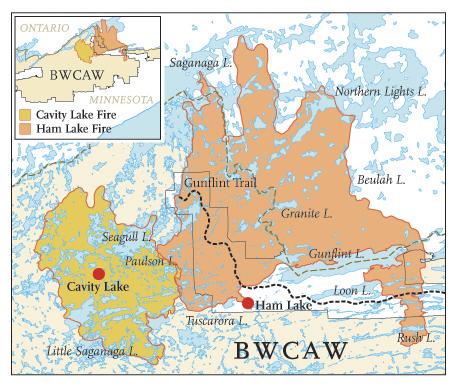 |
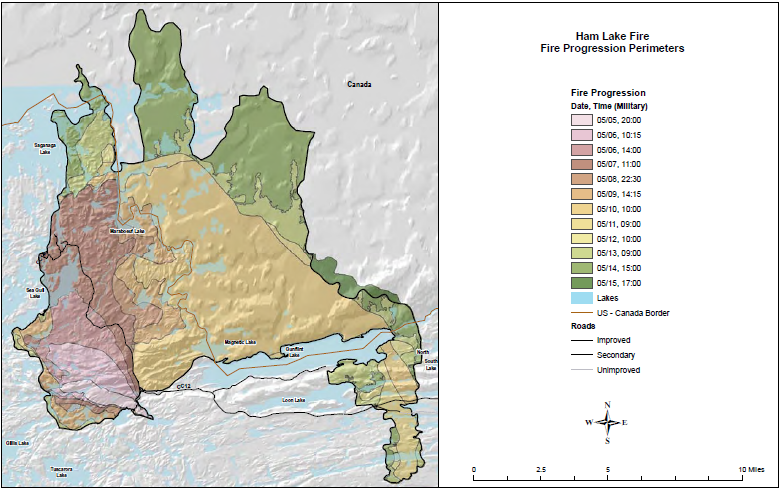 |
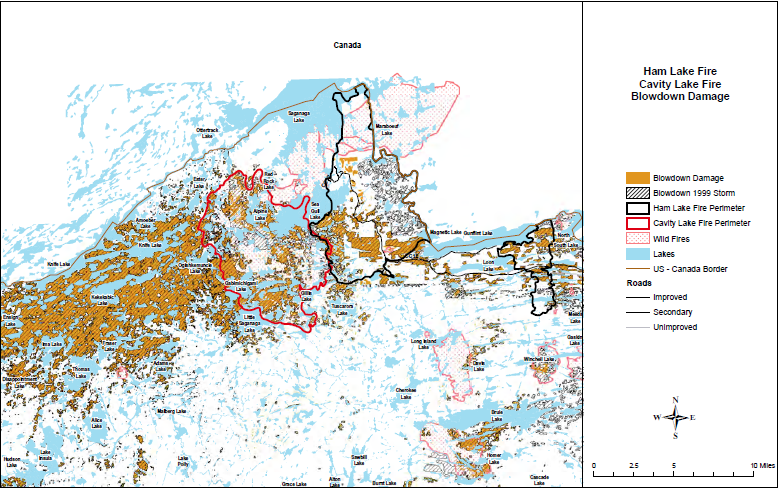 |
| Map of the Extent of the Cavity and Ham Lake Fires | Map of the Ham Lake Fire Progression | Map of the BWCA Blowdown of 1999 with Cavity and Ham Lake Fires |
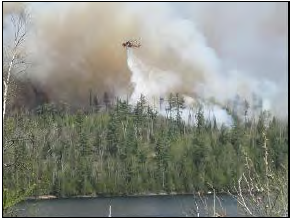 |
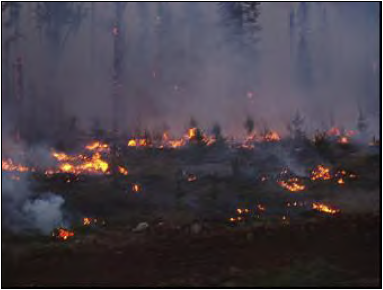 |
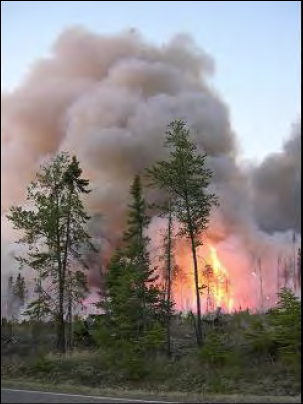 |
| Aerial operations were used on the Ham Lake Fire with helicopters dropping water on the fire | Prior treatment of blowdown areas prevented the fire from further intensification and faster spreading | Background image shows the intense flames and smoke from ongoing crown fire outside the foreground area of previous treated fire area |
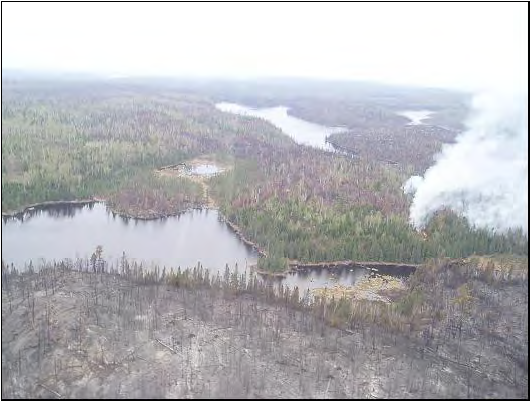 |
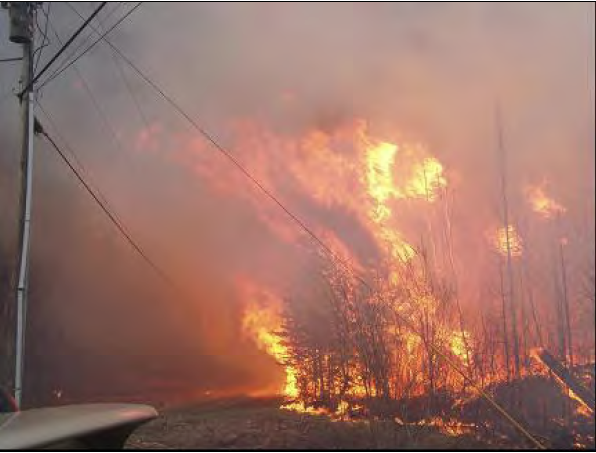 |
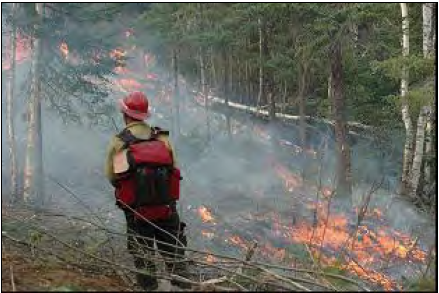 |
| Foreground depicts the tree damage from intense heat from the crown fires | One of the key fuels that contributed to the Ham Lake Fire were balsam firs | A firefighter on the Ham Lake Fire monitors the spread and intensity of the fire |
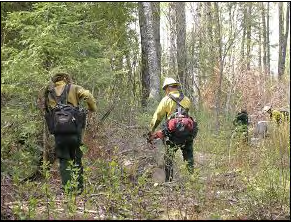 |
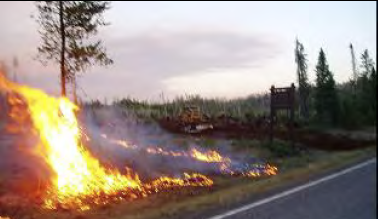 |
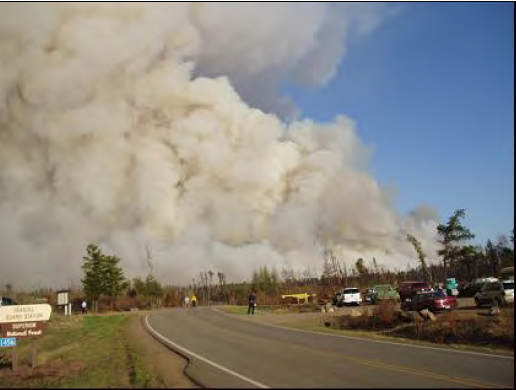 |
| Firefighters removing fuels in preparation of placing a wet line or fire hose to combat the fire | Treatment of areas to reduce available fuels aid burn operations and lessen rate of spread | Smoke from crown fires as evident from the large smoke plumes during the Ham Lake Fire. Photo looking southeast from the Seagulll Guard Station |
Photos courtesy of the USDA Forest Service
 |
Media use of NWS Web News Stories is encouraged! Please acknowledge the NWS as the source of any news information accessed from this site. |
 |